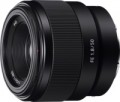DxOMark rating
The result shown by the lens in the DxOMark rating.
DxOMark is one of the most popular and authoritative resources for expert testing of photography devices. According to the test results, the lens receives a certain number of points; The more points, the higher the final score.
Minimum focus distance
Minimum focus distance (m) - the smallest distance from which you can focus on an object and take a photo. Usually it ranges from 20 cm for wide-angle lenses to several metres for telephoto. In the macro mode of the camera or with the help of macro lenses, this distance can be less than 1 centimeter.
Maximum zoom
The degree of magnification of the object being shot when using a
lens for macro shooting (that is, shooting small objects at the maximum possible approximation, when the distance to the subject is measured in millimetres). The degree of magnification in this case means the ratio of the size of the image of the object obtained on the matrix of the camera to the actual size of the object being shot. For example, with an object size of 15 mm and a magnification factor of 0.3, the image of this object on the matrix will have a size of 15x0.3=4.5 mm. With the same matrix size, the larger the magnification factor, the larger the image size of the object on the matrix, the more pixels fall on this object, respectively, the clearer the resulting image, the more details it can convey and the better the lens is suitable for macro photography. It is believed that in order to obtain macro shots of relatively acceptable quality, the magnification factor should be at least 0.25 – 0.3.
Sensor size
The size of the matrix for which the lens was originally designed.
The formats (and sizes) of modern matrices can be indicated diagonally in inches (1/1.8", 1/2.3" — in this case, the conditional "Visicon" inch is taken, which is about 17 mm), according to the actual dimensions (13.2x8.8 mm) or by symbol (APS-C, full frame). In general, the larger the sensor, the more advanced and expensive it is.
Among modern lenses, solutions for such matrix formats are most popular, in ascending order of size:
4/3(17.3x13 mm, used in cameras of the Four Thirds and Micro Four Thirds standards),
APS-C(23x15 mm with slight variations, SLR and MILC cameras of the middle class),
full frame(36x24 mm, the size of a standard film frame — advanced DSLRs),
big frame(anything larger than full frame — high-end professional cameras). Optics for other formats is somewhat less common.
Note that it is technically allowed to use with “non-native” sensors, however, in such cases, the performance characteristics of the optics will differ from those claimed. So, when installed on a smaller matrix (for example, a full frame lens on an APS-C camera), only a part of the image created by the lens will fall on such a sensor. As a result, the space that gets into the frame will be narrower, and the details in the frame will be larger, as if the focal
...length of the lens has increased (although it has remained unchanged, only the matrix has changed). And when installed on a larger sensor, the covered space will increase, the detail will decrease; in some cases, the size of the “picture” provided by the lens may simply not be enough for the entire area of the matrix, and the pictures will be obtained with black space around the edges.Image stabilization
The presence in the lens of its own
image stabilization system. Such a system includes gyroscopes and movable lenses that compensate for small tremors of the lens and prevent the appearance of “shake”. Stabilization is especially relevant when shooting handheld, especially at slow shutter speeds and/or at long distances with high magnification: it is in such conditions that “shake” affects the quality of the image the most. At the same time, it should be taken into account that the presence of a stabilizer significantly affects the weight, dimensions and, above all, the price of optics; at the same time, some modern cameras have their own stabilization systems (due to matrix shift). Therefore, it makes sense to choose a lens with this function in the case when maximum protection against “shake” is of fundamental importance.
Design (elements/groups)
The number of elements (in fact, the number of lenses) included in the design of the lens, as well as the number of groups in which these elements are combined. Usually, the more elements provided in the design, the better the lens handles with distortions (aberrations) when light passes through it. On the other hand, numerous lenses increases the dimensions and weight of the optics, reduces light transmission (for more details, see "Aperture") and also puts forward increased requirements for the quality of processing, which affects the cost of the lens.

